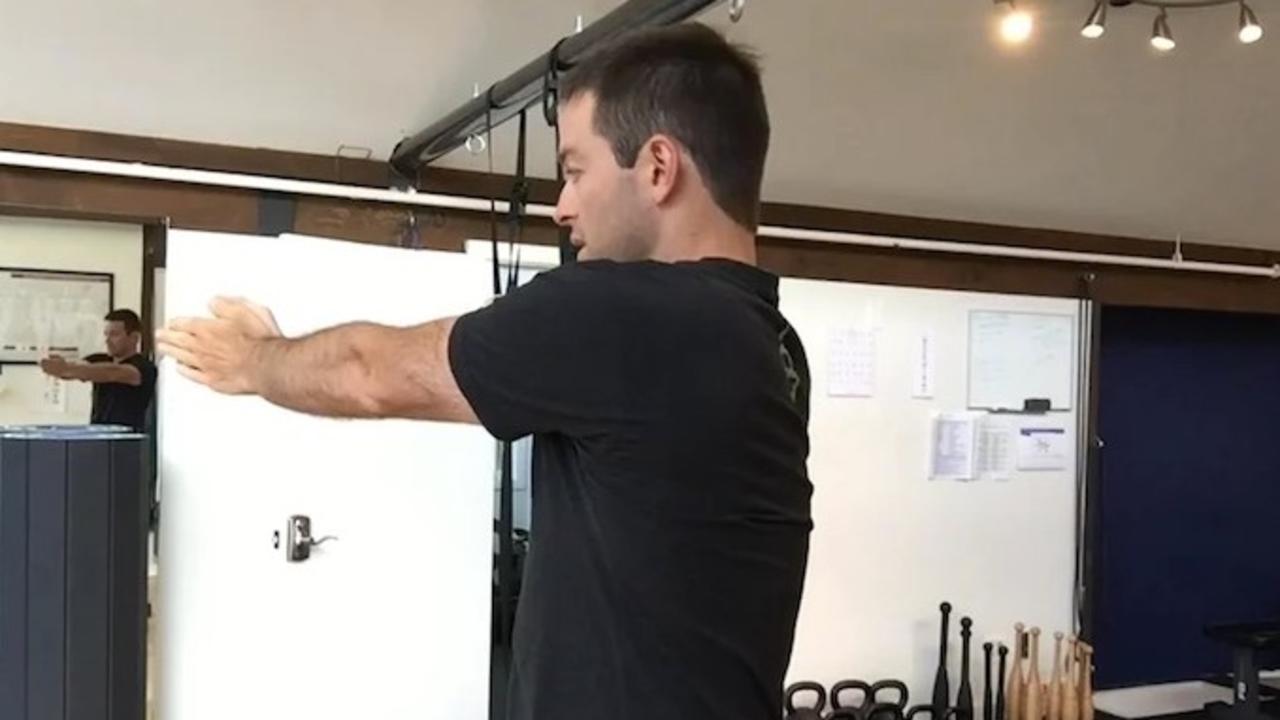Learn how to measure the progress of each exercise in the moment

Learn a self assessment tool to improve your health and performance! from Taylor Kruse on Vimeo.
Hey guys! I’m Taylor Kruse from The Movement Project. In my last video blog I talked about how we use a brain-based model for fitness, how it’s probably very different from anything you’ve ever seen before, and that we are getting some really exciting results with people using it.
Today, I’m going to teach you what we refer to as Self Auto-regulation, which is really just a fancy way of saying “Self-Assessment Tool.” This will help you validate whether or not an exercise is helping you or potentially hindering your progress.
Here’s why this is so important:
Not everyone responds equally to the same stimulus.
Exercise selection is actually very individualized. Selecting the wrong exercise or the wrong dosage of exercise can actually hinder your fitness efforts more than you realize. And, it can also increase pain. This can be especially important if you are in a recovery or rehabilitation process.
Today, I’m going to teach you a fast, 3-step protocol that will help you assess all of your favorite exercises to make sure that they’re giving you the result that you want!
Here’s how it works!
Step #1:
Assess a baseline range of motion. I’m going to show you two that we use here pretty frequently, but it can be any range of motion that you like.
For the shoulder, bring your elbow to a locked out position and simply bring the arm up into an overhead position. I also like trunk rotations. Bringing my hands together and maintaining a neutral stance without pivoting my feet, I’m going to rotate side to side.
As you’re doing your range of motion assessments you want to take a qualitative reading on:
- How easy or difficult is it to make the motion?
- Do you feel any limiting factors?
- How far did you go?
Step #2:
Perform the desired exercise.
Step #3:
Reassess. After you perform the exercise, reassess to see if you got better, stayed the same, or got worse.
Here’s how the process will look:
I’m going to take my range of motion (step 1), trunk rotations side to side. I feel a little bit tight going to my right side with a little bit of tightness in the left side low back. (step 2) Now I’m going to preform a mobility drill. One of my more favorite mobility drills called the camshaft, for scapular mobility. I’m going to do two or three repetitions and then reassess (step 3). I actually got significantly more rotation to the right and my lower back feels a little looser. So that’s how the process works.
I want you to try this with all of your favorite exercises. You can literally go through your workout assessing and reassessing to see what kind of response your exercises are having on your nervous system.
If you get better, I want you to do more of that exercise during your workout! If you stay the same, consider another option, one that might give you a better result. If you get worse I want you to remove that exercise from your workout because you can probably find one that gives you a much better result!
I love teaching this concept to my clients and athletes! It can be a complete game changer leading the way to better health and performance. I hope you enjoyed it. Let me know if you have any questions.

About the Author:
Taylor Kruse, recently featured in Men's Health, is dedicated to empowering you with the truth and tools for improved health and performance.
His inspiration stems from more than 10 years of education and coaching through systems like Zhealth Performance, The Burdenko Method, and various movement practices.
INTERESTED IN GAINING STRENGTH AND MOBILITY?
Explore our free resources
Learn more about muscle weakness, tight body parts and pain so you can eliminate obstacles and build strength, mobility and longevity for anything you want to do!

